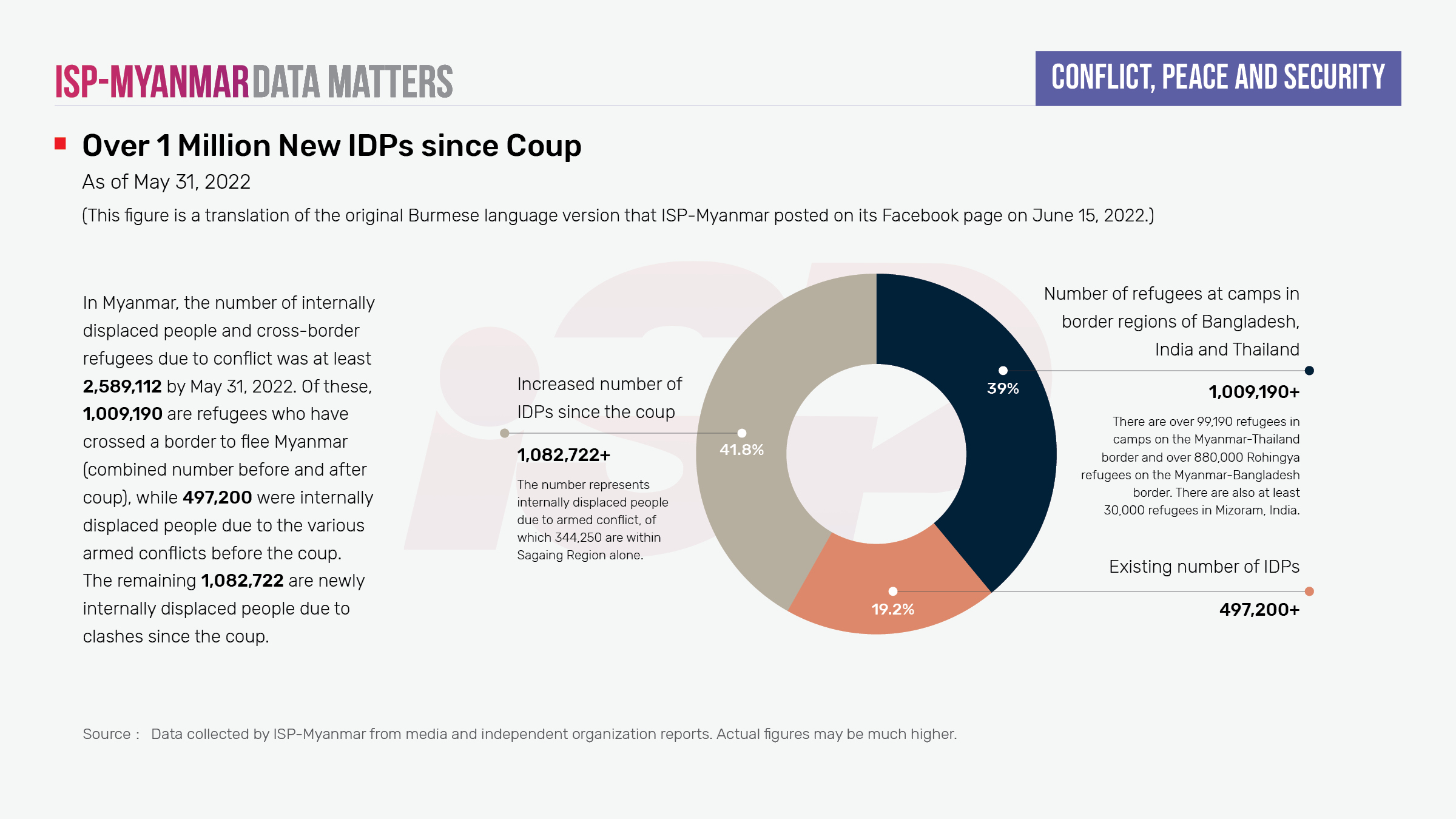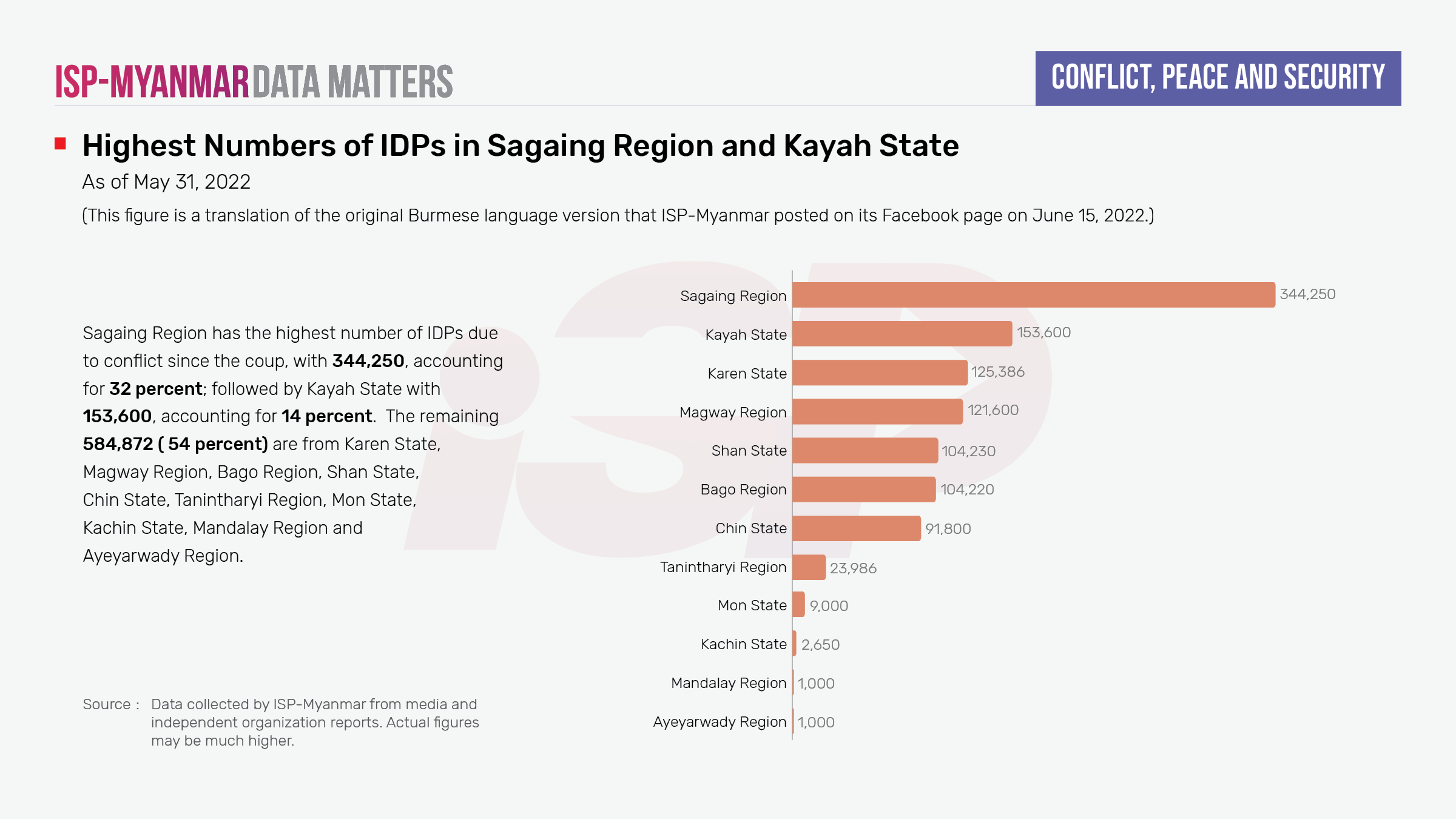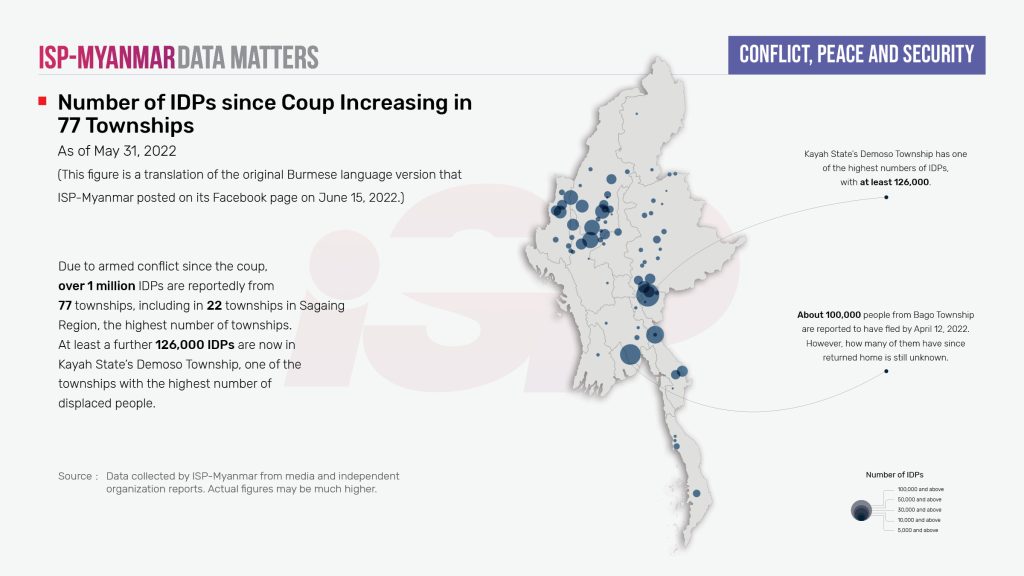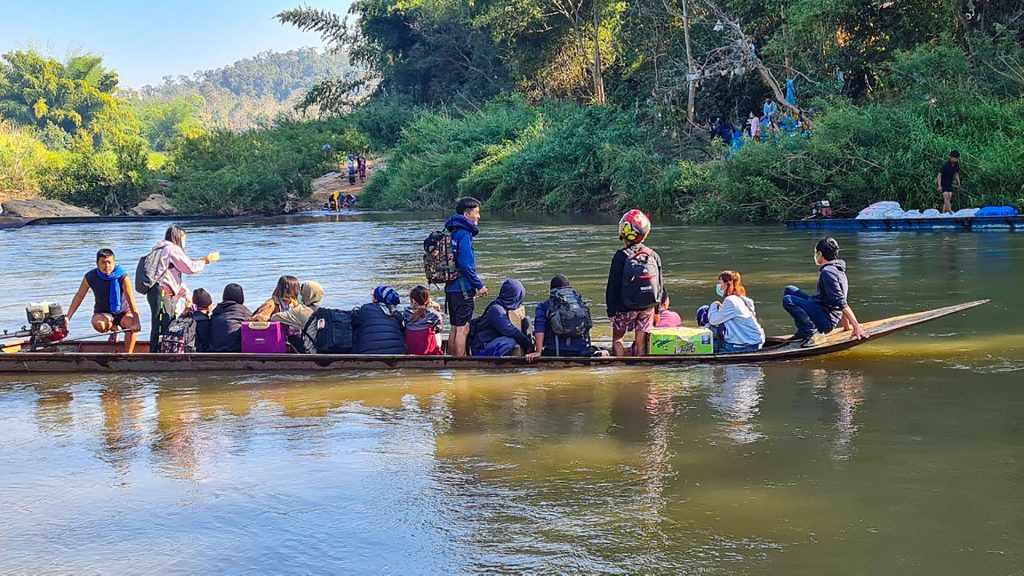Data Matters No. 25
(This article is a translation of the original Burmese language version that ISP-Myanmar posted on its Facebook page on June 15, 2022.)




In Myanmar, the combined number of internally displaced people and refugees having crossed a border due to conflict from 1989 to May 31, 2022 has exceeded 2.5 million (2,589,112). Of these, 1,009,190 (combined before and after the coup) are refugees who have fled the country and 497,200 are people internally displaced due to the various armed conflicts before the coup. The rest 1,082,722 represents the number of new IDPs increased since the coup on February 1, 2021 until May 31, 2022 due to clashes between State Administration Council (SAC) forces with both ethnic armed organizations and other local defense forces (such as the PDF/LDF/CDF/CNDF/KNDF).
The number of refugees has been increasing monthly since the coup, and at least 527,697 people have now become internally displaced in the first five months to May of 2022. This represents 49 percent of the total number of newly internally displaced people since the coup. Sagaing Region now has the highest number of IDPs since the coup with 344,250, accounting for 32 percent of the total; this is followed by Kayah State with 153,600, accounting for 14 percent. The remaining 584,872 (54 percent) are from Karen State, Magway Region, Bago Region, Shan State, Chin State, Tanintharyi Region, Mon State, Kachin State, Mandalay Region and Ayeyarwady Region.
Looking at the increased number of IDPs based on township-level data, there were 77 townships with IDP populations. This includes 22 townships from regional refugee hotspot Sagaing Region. Kayah State’s Demoso Township has one of the highest numbers of refugees, with at least 126,000 displaced. At township level, Bago Township now has the highest number of internally displaced people after clashes broke out with SAC forces on April 21, 2021, after which about 100,000 residents fled. It remains unconfirmed how many of these 100,000 people have since returned home and how many are still on the run.
∎ Why does it matter?
By looking at the number of civilian fatalities and injuries, how they were killed and wounded, and the number of people displaced by fighting involving SAC’s forces and EAOs, or within EAOs themselves, it is possible to examine whether or not armed forces have committed human rights violations from the perspective of transitional justice. In addition, by studying the post-coup situation, further research can be conducted to examine whether there has been a change in conditions related to Myanmar’s peace process.
∎ Other relevant readings
On-the-ground reports from ethnic news organizations and other independent media groups provide regular updates about conflict situations, their impact, and the collateral damage in the aftermath of the military coup. These include reports of renewed fighting in ethnic areas, civilian fatalities, and rising refugee and IDP issues on the ground. In addition, records and reports by United Nations organizations such as the United Nations Office for the Coordination of Humanitarian Affairs (UNOCHA), and other independent local and foreign organizations also provide information about the ongoing conflict situation in Myanmar.

